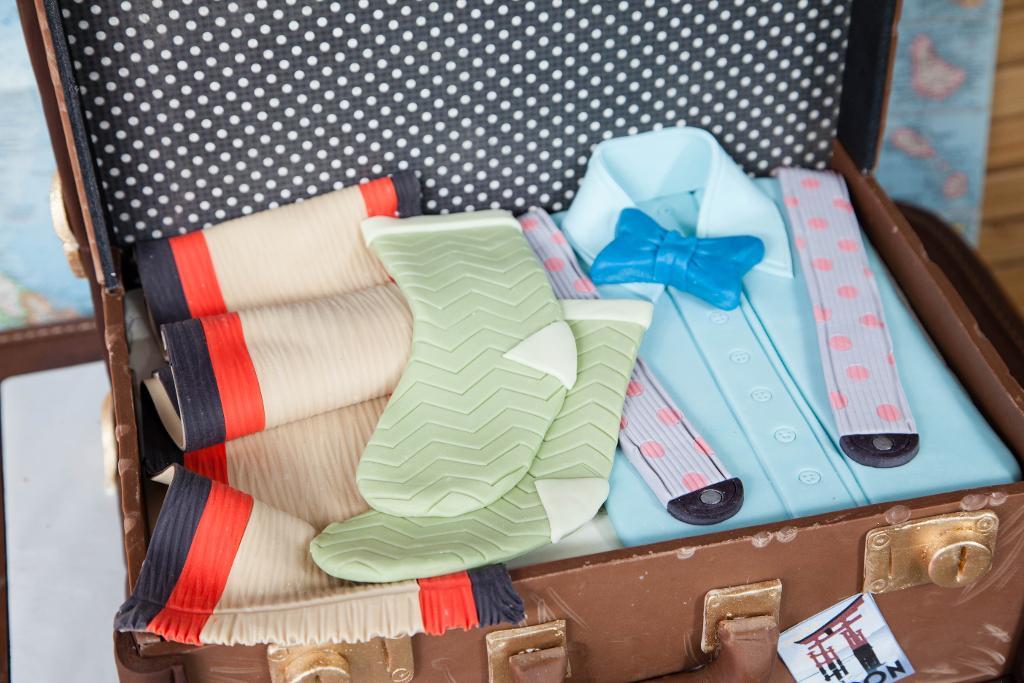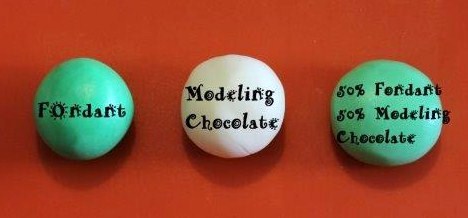As cake decorators, we know you have worked hard learning the intricacies of fondant, from molding and shaping it to finding ways to prevent rips, tears or bulges. But now you hear all this hype about modeling chocolate, with decorators claiming how it is so much better than fondant and how it can be used to create gravity-defying cakes.
The thought of learning how to use modeling chocolate can make some cake decorators want to grab their fondant and make a run for it. But it’s not so scary, I promise! Modeling chocolate is a great medium with tons of benefits, and it’s different than fondant. You CAN conquer the modeling chocolate beast, learning how to make modeling chocolate and creating incredible cakes with this new sugar dough!
Using modeling chocolate can be fun! Let’s demystify the medium.

Photo via Craftsy instructor Lauren Kitchens
What is modeling chocolate?
Modeling chocolate is untempered melted chocolate (or candy melts) mixed with corn syrup. The corn syrup causes the chocolate to seize and thicken. Once the mixture is cooled (best done overnight), it hardens and solidifies. After resting for 18-24 hours, you can cut it into pieces, using your hands to soften the pieces into moldable dough.
Note: Modeling chocolate is thicker than fondant, but the thickness lends to the dough being stronger and more stable.

Modeling chocolate vs. fondant…what’s the difference?
As you probably know, fondant dries out quickly, causing tearing and elephant skin. This is not the case with modeling chocolate. If you accidentally left a piece of modeling chocolate out on the counter overnight, you would be able to soften it in the morning and use it again (although I wouldn’t recommend this technique).
Air is the enemy of fondant, while heat is the enemy of modeling chocolate. We use the warmth of our hands to soften and condition the modeling chocolate, but if we overwork the modeling chocolate, the warmth will cause the dough to break down, separating the oils in the chocolate and creating mush.
Don’t worry though! The breakdown process won’t destroy your modeling chocolate. You can either set the dough down and let it cool for about 20 minutes or place it in the refrigerator for a few minutes. See, good as new!

Can I mix modeling chocolate and fondant?
Yes! Certain decorations would benefit from a mix, like polka dots, due to the long drying time. Craftsy instructor Jessica Harris recommends mixing fondant and modeling chocolate for a more pliable medium to make stripes and intricate designs, like the ones she demonstrates in her Craftsy class Clean & Simple Cake Design.
5 benefits of using modeling chocolate:
1. Shape and structure
Fondant is extremely pliable, causing gravity to have a major effect. Gravity causes fondant to sag, droop and just not hold its shape. Modeling chocolate, on the other hand, is not stretchy, so it holds its shape very well.
The lack of elasticity can make covering a cake in modeling chocolate difficult. However, when it comes to modeling figures and detailed sculptures, modeling chocolate is perfect! The ability to hold shapes is great for imprinted images and adding free-standing designs to your cakes.

2. Versatility
Modeling chocolate is extremely adaptable. You can make anything you want! From figures of people or characters to buildings to flowers, the sky is the limit! To try it out for yourself, see our tutorials on how to make a modeling chocolate elephant and a modeling chocolate giraffe.

3. Color changing
Modeling chocolate can easily be dyed in any color you choose. You can use either gel colors or water-based colors. In order to color your modeling chocolate white, Lauren Kitchens recommends using white candy coloring.
4. No drying
Another benefit of modeling chocolate is that it doesn’t dry out. Well, at least not like fondant. While you are working with modeling chocolate, you do not need to worry about drying and cracking like you do for fondant.
If you have kept your modeling chocolate stored for a few months, it may seem dry when you pull it back out. If this happens, just work in a little shortening. The dough will be back to normal in no time.

5. Refrigerator safe
Modeling chocolate can be stored safely in your refrigerator. If the dough is getting soft and begins to fall apart, stick it in the fridge to firm up. Also, if you are making delicate decorations that need to hold their shapes well, place them in the fridge to solidify.
So there you have it! Modeling chocolate is worth a try — just be patient as it can take a few tries to get it right. Have fun and give it a go! You will be amazed at how much you can do with this awesome medium!

Share tips, start a discussion or ask one of our experts or other students a question.
No Responses to “Conquer Your Choco-Phobia: Demystifying Modeling Chocolate”